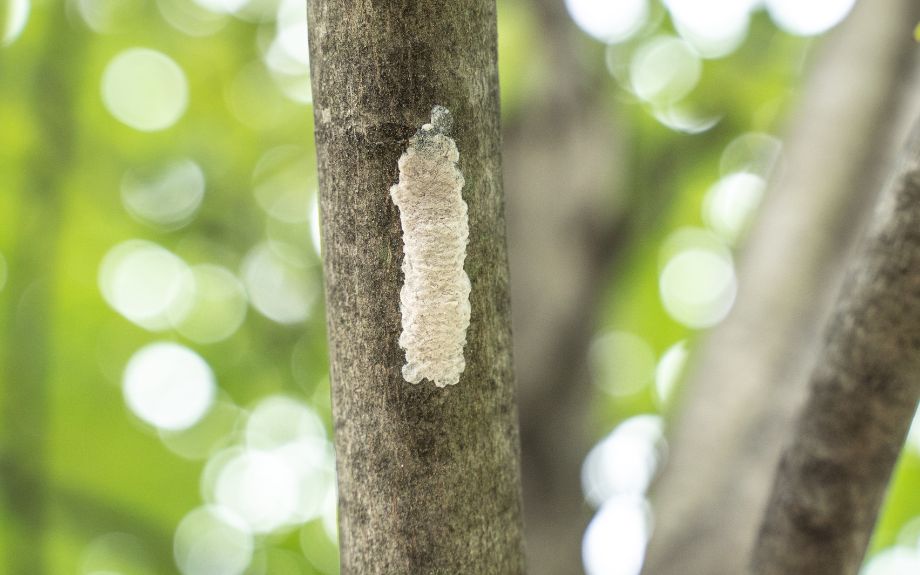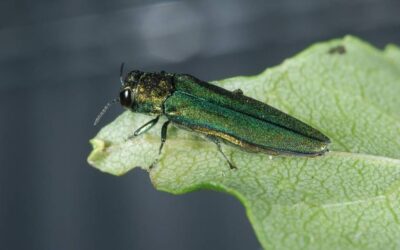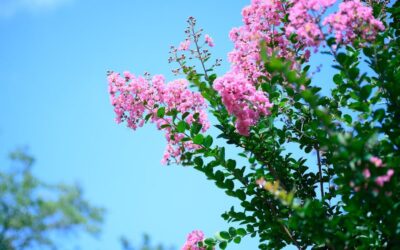Blog Topics
Both Virginia and Maryland are facing an influx of an invasive insect – one that can harm trees and destroy vines for winemaking and hops for beer. The pest is called the spotted lanternfly, sometimes referred to as SLF.
In this article, we’ll go over how to recognize this pest during various stages of its life, what to do if you have this pest on your property, some trees that it is likely to affect, and more.
What is the Spotted Lanternfly?
Spotted lanternfly is the common name for Lycorma delicatula, an invasive insect from Asia, specifically China, India, and Vietnam.
This pest is considered invasive because it is causing stress to trees and crops while reproducing and spreading quickly. Since it is not from the United States, it does not have any predators here, which is one of the reasons its spread is out of control.
How to recognize the Spotted Lanternfly
The spotted lanternfly has several life stages but is most easily recognized as an adult. It is around an inch long, and its top wings have black dots or spots, and the back wings have red patches, black spots, and a white band. Adult spotted lanternflies are usually out from July through November.
Spotted lanternflies tend to swarm, so if you see one, there are most likely others nearby. You may notice them more around dusk when they tend to move up or down tree trunks or plant stems. Sometimes they are found in a group at the bottom of trunks or stems.
Life Stages
Spotted lanternflies go through several life stages. While they are most destructive during the nymph and adult stages, they spread most easily when they are just eggs. Knowing and recognizing spotted lanternflies at each of these stages can help you recognize and remove them.
Eggs
Spotted lanternflies start out as eggs inside a brownish-gray egg mass that may only be an inch long. Egg masses are found on trees, rocks, bricks, lawn furniture, shipping containers, vehicles, firewood, dead plants, and other smooth objects, which is why there are quarantine measures to check these items when they travel (we cover that more later).
You might spot egg masses from November through May. If there is an egg mass on your property, you can scrape it off, put the contents in a bag that contains isopropyl alcohol or hand sanitizer, and throw it away.
Nymphs
From May to August, the eggs hatch and form into nymphs, which feed on a variety of plants and trees. Early nymphs are small, just a few millimeters long. They have black bodies with white spots. While they don’t use their wings yet, they can jump.
Late-stage nymphs are around ½ inch long and have turned red, with black stripes and white spots.
Late-stage nymphs become adults, adults lay eggs, and the cycle continues.
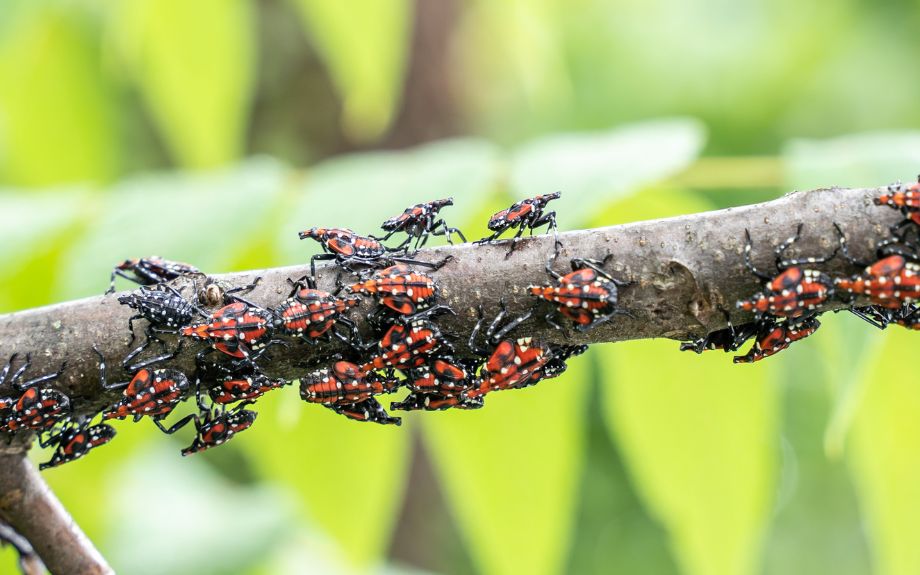
Trees and Plants Impacted
Spotted lanternflies are sap-sucking insects, and they have their preferences when it comes to what plants and trees they favor.
Tree of Heaven
Spotted lanternflies seem to prefer a tree called tree-of-heaven (Ailanthus altissima), which is also native to Asia. In our area, this tree is considered invasive, so you shouldn’t have it on your property.
If you do have this type of tree, you may want to have it removed. Note that to completely eliminate this tree, the roots have to be removed. While this is possible for young saplings, cutting down the tree and treating the stump with herbicides to discourage re-sprouting may be the only option for larger trees.
Check out this visual guide to tree-of-heaven identification from Virginia Tech.
Watch this video explanation of tree-of-heaven from Penn State.
Other Trees and Plants
More than 100 types of plants and trees can be negatively impacted by the spotted lanternfly. While the tree-of-heaven is its preferred food source, it will easily move on to other plants, trees, and vines.
Vineyards, hops, and fruit trees have been hurt by spotted lanternflies in Virginia and Maryland. They have also been known to impact:
- Almonds
- Apples
- Apricots
- Cherries
- Grapes
- Hops
- Maple trees
- Nectarines
- Oak trees
- Peaches
- Pine trees
- Plums
- Poplar trees
- Sycamore trees
- Walnut trees
- Willow trees
After tree-of-heaven, grapevines seem to be the spotted lanternflies’ preferred food source, but they will feed on anything with young stems and branches, especially those listed above.
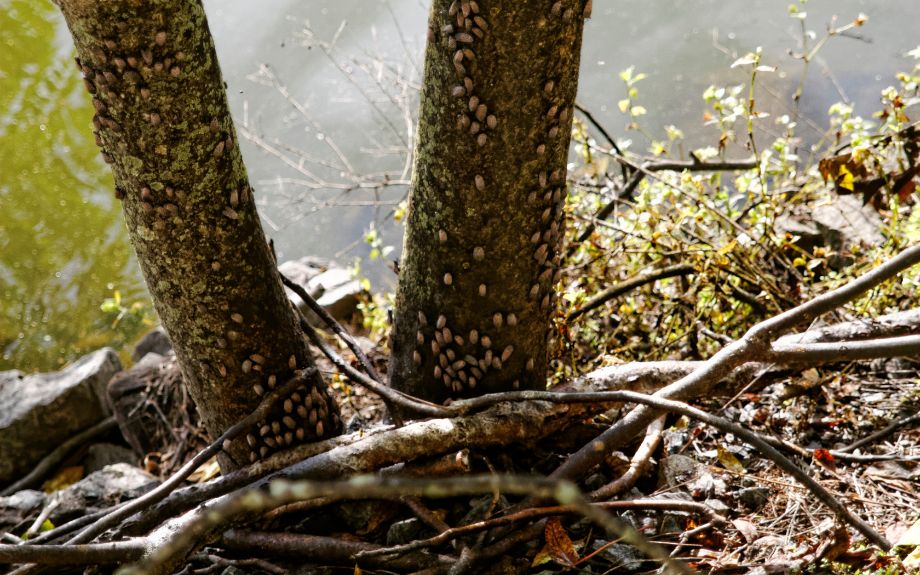
How are Spotted Lanternflies Harmful?
Spotted lanternflies don’t sting, bite, or otherwise cause immediate harm to humans or animals. However, their negative impact on plant life in general and agriculture, in particular, has been devastating and continues to get worse.
Both nymphs and adults feed on plants by sucking the sap out of stems and branches, wounding the plant or tree, and making the process of photosynthesis difficult. As they feed, the spotted lanternflies release a liquid called honeydew. The honeydew can lead to mold growth on and near the tree and attracts other insects. The growth of sooty mold can again prevent photosynthesis (leaves need sunlight), and the insects that are attracted to the honeydew can severely hurt an already damaged plant.
Some trees and plants continue to lose sap after the insects have fed thanks to open wounds, which weakens the tree, causes unpleasant owners, ruins nearby cars, and contributes to the decline of the tree.
While SLF has killed trees of heaven and grape vines, it rarely causes the death of other trees and plants directly. However, it can cause enough damage and leave enough mess behind that a stressed tree or plant might eventually succumb, especially if that tree experiences drought, disease, or harmful pests.
Spotted Lanternfly Spread and Prevention
Spotted lanternflies are continually spreading in the Northeast, but there are some things you can do to help control their population.
How do Spotted Lanternfly Populations Spread?
The spotted lanternfly cannot travel far on its own, hopping when young and flying short distances as an adult. Instead, it is an experienced hitchhiker, moving from location to location by hitching a ride on any form of transportation it can.
This is how the spotted lanternfly arrived from Asia and how it spread from its initial United States location, Pennsylvania, since first being discovered there in 2014.
While the nymphs travel by hopping, it’s not the nymphs or adults that tend to travel to new places but the eggs. Spotted lanternfly egg masses have been found on vehicles, crates, firewood, lumber, and many other objects that end up crossing county and state borders.
Spotted lanternflies were found in both Virginia and Maryland in 2018.
What Is Being Done to Control Spotted Lanternflies?
Quarantine
In Maryland, a quarantine is in place for many counties, which means that any businesses that are moving within or through the counties need a permit. This is to try to control the pest from spreading further.
More information on Maryland SLF permits.
In Virginia, there is also a quarantine in place for several counties. Just as in Maryland, any business that is moving within or through the quarantined counties will need a permit.
More information on Virginia SLF permits.
Report Sightings
If you find spotted lanternflies in an area, not under quarantine, you can report it. You may need to capture the insect or take photos.
In Maryland, you can report sightings of spotted lanternflies in most counties except for Cecil or Harford. You can submit a report online, email DontBug.MD@maryland.gov or call (410) 841-5920.
In Virginia, if you find Spotted Lanternflies outside of the quarantined counties or cities, you can report them to your local Virginia Cooperative Extension Agent.
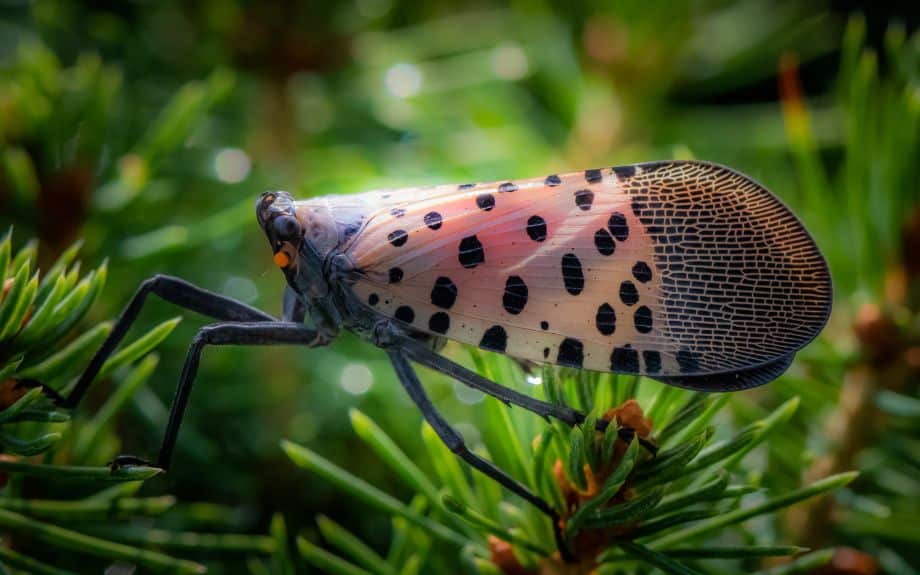
What You Can Do About Spotted Lanternfly on Your Property
- Learn how to identify spotted lanternflies in all of their life stages
- Check for egg masses on your tree branches and trunks, outdoor furniture, fence posts, vehicles, pots, or any other places they are likely, and destroy them if found
Here’s a helpful Spotted Lanternfly checklist you can utilize >> - Squish any nymph or adult spotted lanternflies and report their sighting if you are in a non-quarantine area
- Remove tree-of-heaven trees from your property if any exist
- Don’t move firewood to new locations
- If you’re in a quarantined area, don’t park under trees and keep your windows closed. Check your vehicle before leaving the area.
- Keep your trees and plants healthy and stress-free as much as possible
Here are some other steps you can take to control the spotted lanternfly >>
Riverbend Can Help
It’s not great news that the spotted lanternfly has reached Virginia and Maryland and continues to spread, but knowing more about this pest, how it can impact your property, and what you can do will help you and your plants.
If you realized you have a tree-of-heaven on your property, contact Riverbend for a quote for a removal.
If you’ve noticed spotted lanternflies on your trees, we can help you keep those trees as healthy as possible through methods such as fertilization, organic mulch, watering, and more.
Spotted lanternflies will impact already stressed or injured trees the most, so schedule a tree inspection soon, and we can help you revive your trees to make them better able to withstand an attack by this new threat.
More Information
These resources may be helpful as you learn more about spotted lanternflies:
What Virginians Need to Know About the 2022 Spotted Lanternfly Quarantine Expansion
Spotted Lanternfly in Virginia
Spotted Lanternfly in Fairfax County
University of Maryland Spotted Lanternfly Management for Residents
From the USDA – Spotted Lanternfly: What Citizens Can Do
USDA Pest Alert on Spotted Lanternfly
USDA Poster: Join the Battle. Beat the Bug.
Spotted Lanternfly Lore: Penn State Experts Clear up Falsehoods about Pest
Spotted Lanternfly resources from the Virginia Department of Agriculture and Consumer Services
Give Us a Call at 703-402-9366
If you'd like help with your trees or landscape, have any questions, or would like to schedule an appointment with one of our Certified Arborists, please give us a call. We'd love to hear from you!

